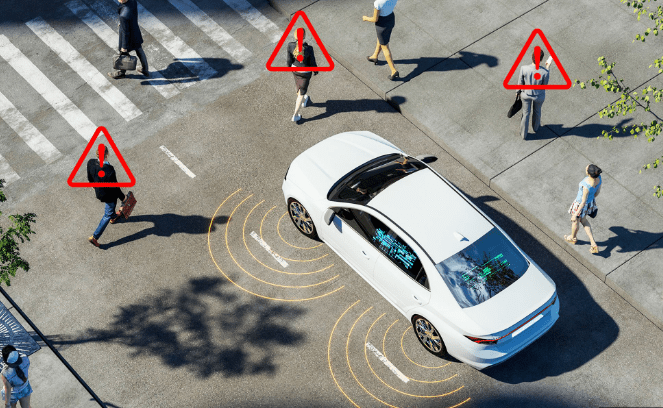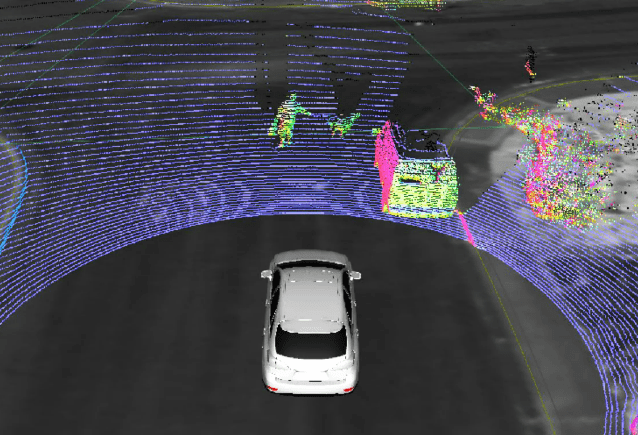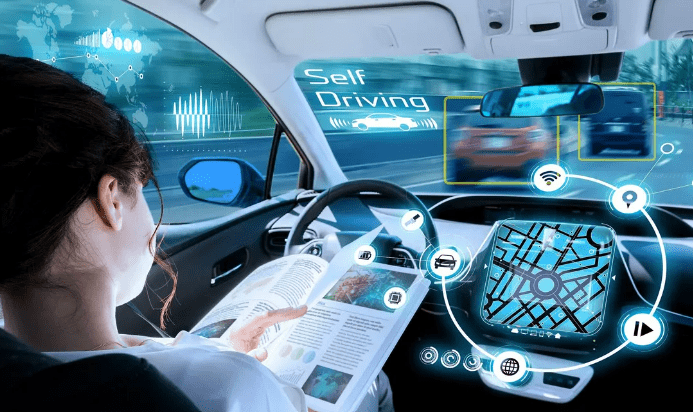The Brain behind Self Driving Cars: Over the past 150 years, since the groundbreaking efforts of Karl Benz and Henry Ford, automobiles have made remarkable progress. With approximately one billion cars traversing the world’s roads and about 70 million new cars being manufactured annually, cars have become an integral part of our society. Originating from the combination of the Greek word “autos” meaning “self” and the Latin word “mobilize” meaning “movable”, the concept of a car that not only propels itself but also operates autonomously has always been a driving force in the industry. Now, advancements in technology are finally turning this vision into a tangible reality.
What are the challenges on the way to full autonomous driving?

Currently, skilled humans are responsible for driving cars and effectively recognizing, processing, and responding to diverse external conditions. They adeptly interpret standardized signals like traffic lights and road signs while also possessing the ability to adapt and make decisions when faced with non-functional or absent signals. Additionally, human drivers actively engage and communicate with other drivers, ensuring safety and preventing accidents. Moreover, humans proficiently operate the various mechanical components of a vehicle, utilizing essential parts such as the steering wheel and brake.
In recent years, the hindrance to autonomous driving posed by replicating the complete range of human senses and the rapidity with which human drivers perceive and react to information has appeared insurmountable. Nevertheless, advancements in technology have successfully addressed various aspects of driving mechanics, such as automatic transmission and power steering, minimizing human involvement.
Advancements in sensor technology, along with their miniaturization, the exponential growth of computing power, the progress of artificial intelligence, and the promise of powerful 5G communication, have transformed the landscape. These developments have paved the way for cars to attain an unprecedented level of autonomy. A future where vehicles can perceive, comprehend, and respond to their surroundings is within reach. They will possess the capability to identify and evade nearby vehicles, pedestrians, and potential hazards with a higher level of reliability and precision than us mere humans.
Which technologies are required to make autonomous cars work?
Autonomous vehicles will primarily rely on three types of robust computer chips: sensing chips for perception, processing chips for computation, and actuation chips for control. These advanced components are imperative for the successful operation of self-driving cars. So let’s discuss the brain behind self driving cars and some other important things of a self driving cars.

1. Sensing chips – The eyes and ears of the car
Today, car sensors serve a wide range of purposes, from life-saving collision warning systems to convenient features like automatically activating wipers in response to rain. However, autonomous vehicles require even more advanced sensor technology to navigate the roads and accurately detect other vehicles, pedestrians, and potential hazards in any condition. Leading the way in autonomous driving capabilities are LiDAR sensors, which use light instead of radio waves, along with cameras. Additionally, a multitude of other micro-electromechanical systems (MEMS), such as accelerometers, proximity sensors, and gyroscopes, will play crucial roles in turning self-driving cars into a reality.
2. Processing chips: The brain behind self driving cars
To effectively manage the vast amounts of data collected by sensors, a corresponding array of processors and memory chips must be employed. These components play a crucial role in extrapolating driving functions from the data. For seamless communication, autonomous vehicles rely on specialized communication chips, such as 5G, to exchange information with each other and with the cloud. The processors, in turn, must accurately interpret this information. The range of data to be processed spans from measuring the distance, velocity, and acceleration or deceleration between nearby cars on a stretch of road, to collecting road-surface temperature readings and receiving weather alerts.
3. Control chips: the heart of the car
For the past three decades, electronic components have played a crucial role in our cars, handling tasks such as transmission control, engine monitoring, braking, and steering assistance. As technology advances, fully autonomous cars are on the horizon, requiring enhanced actuation functions and multiple layers of safety and redundancy. This progression signifies that electronic integration is no longer a daunting technological obstacle to overcome.
What is the current state of play?
A widely acknowledged classification of automation levels exists, which can be outlined as follows:
- L0: No Automation: The involved driver maintains complete control of the vehicle.
- L1: Driver assistance: driver uses systems for steering or acceleration/deceleration in some modes
- L2: Partial Automation: The driver uses systems for steering and acceleration/deceleration in certain modes.
- L3: Conditional automation: The driver relies on an automated driving system for all driving aspects in certain modes while also remaining prepared to intervene when necessary.
- L4: High automation: The driver uses an automated driving system for all driving aspects in certain modes and can intervene if necessary. The vehicle can also stop safely without intervention.
- L5: Full automation: The driver relies wholly on the automated driving system at all times.
The Tesla Model 3 currently meets the requirements for L2, while some people consider the Audi A8 to be L3; however, others dispute this and claim there aren’t any series-production cars at L3. Although equipped with L4 and L5 features, the Waymo Google prototype has yet to reach production scale. It still has a significant distance to cover before becoming a reality.


3 thoughts on “From dream to reality, The Brain behind Autonomous Cars”